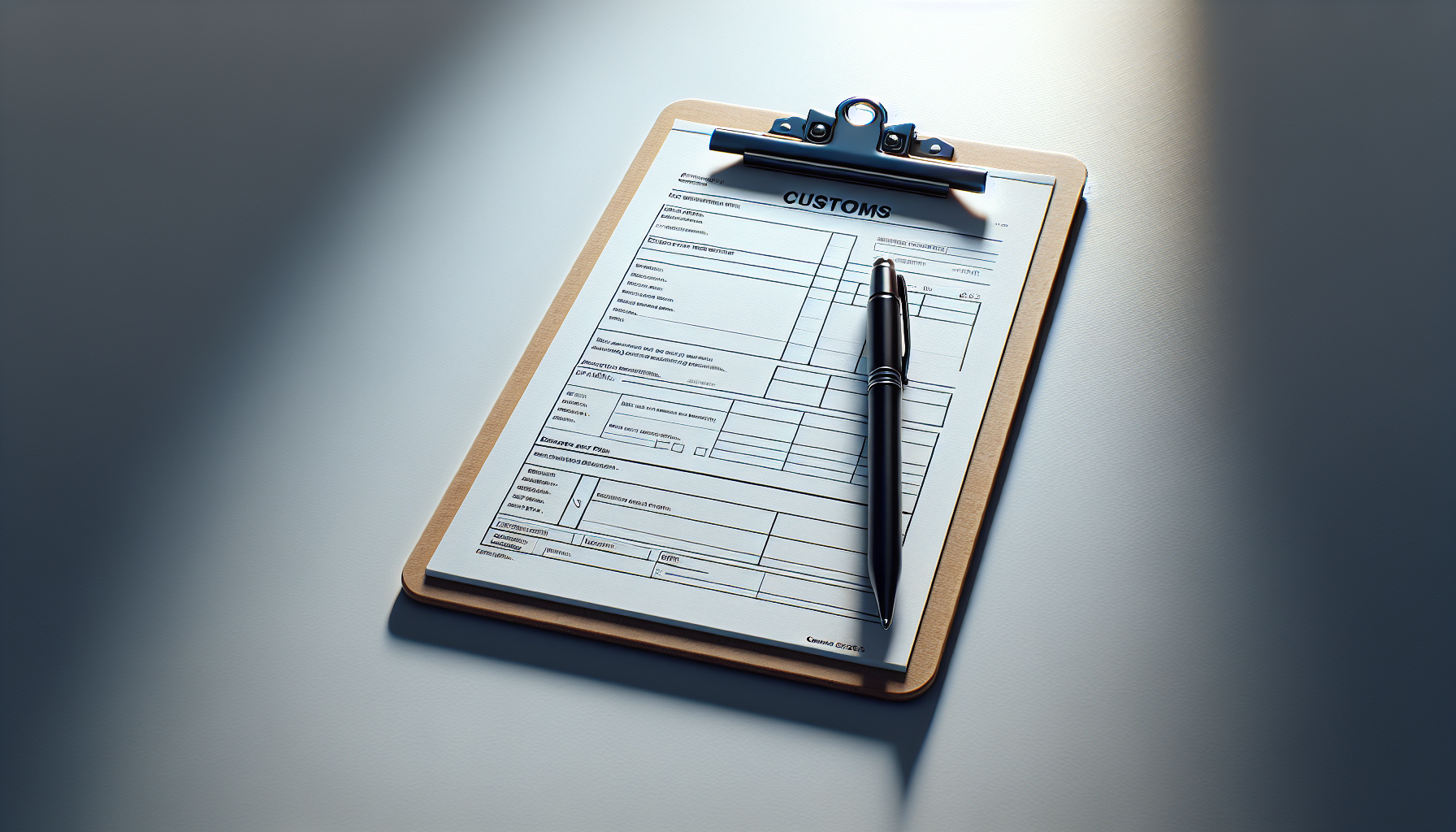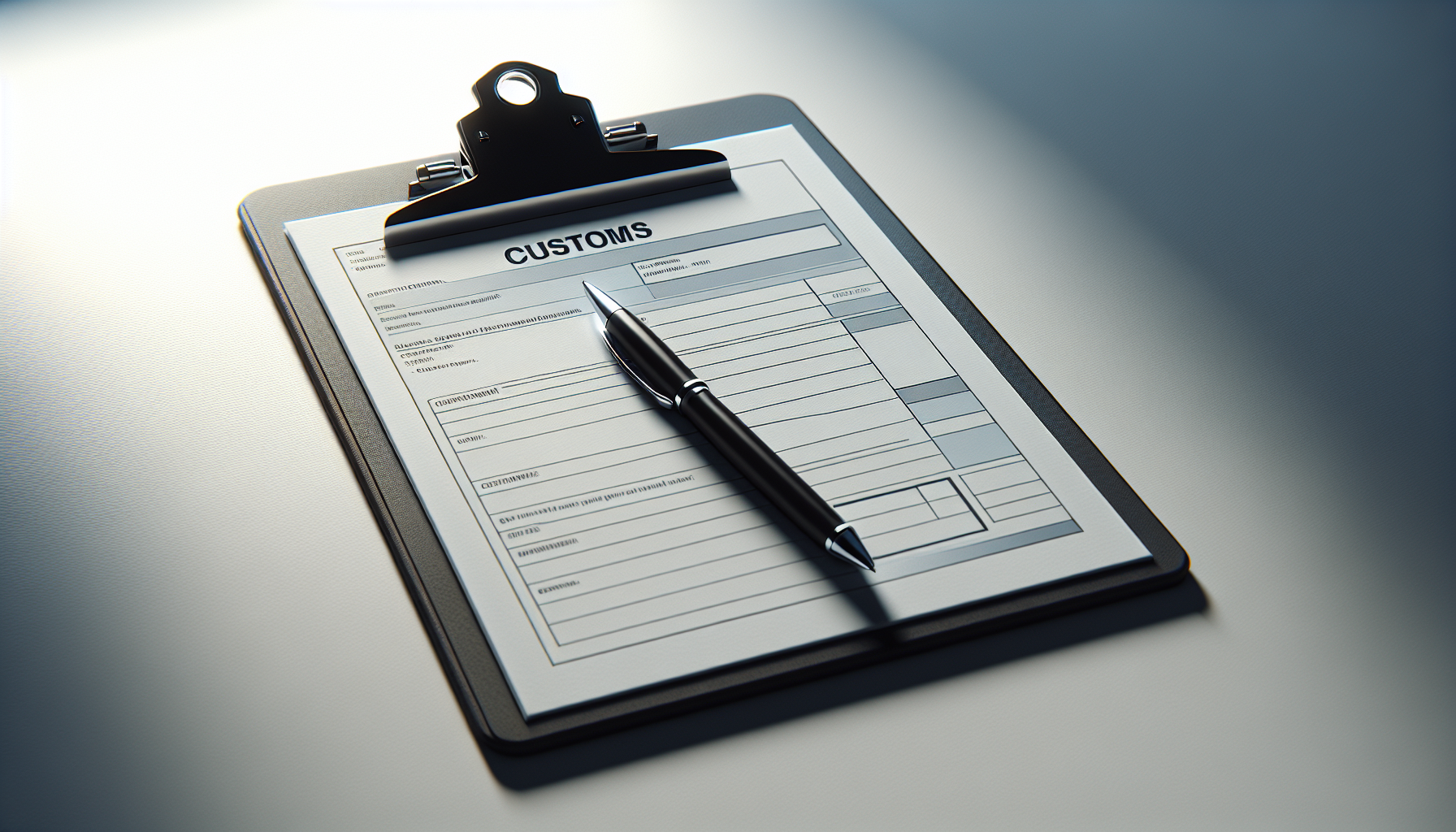ISF Filing For Personal Effects: Template For Customs Brokers (Beginner-Friendly Format)
?Are you responsible for filing an ISF for a client’s personal effects and need a straightforward, beginner-friendly template that covers compliance from start to finish?
ISF Filing for Personal Effects: Template for Customs Brokers (Beginner-Friendly Format)
This section introduces the purpose of this template and frames how you, as a customs broker, will use it to assemble accurate Importer Security Filing (ISF) entries for personal effects shipments. You’ll get a pragmatic checklist and a narrative of the user journey from intake to post-arrival audit readiness.

What is ISF and why personal effects matter
ISF (Importer Security Filing) is the U.S. Customs and Border Protection requirement to submit advance cargo information prior to loading on vessels bound for the United States. Personal effects—household goods, used personal items, and unaccompanied baggage—often create edge cases because documentation and descriptions can be less formal than commercial invoices. You must treat them with the same rigor to avoid penalties.
Basic definitions and requirements
This part gives concise definitions so you understand the vocabulary used in forms and systems. You’ll learn what constitutes an ISF 10+2 filing, who the importer of record is, and which data elements are mandatory versus recommended, helping you avoid ambiguity.
- ISF 10+2 core elements you must file
- Typical documentation for personal effects (packing lists, bills of lading, declarations)
- Timing requirements: ISF must be filed at least 24 hours before vessel departure from foreign port
Who files and who can be the Importer of Record
This subsection explains roles and responsibilities: you as the customs broker, the importer (often the traveler or household goods consignee), and the carrier or vessel operator. You’ll understand when you can act on behalf of the client and what explicit authorizations you need.

Step-by-step ISF template for personal effects
Below is a practical, field-by-field template you can copy into your broker platform or use as an intake form. Each item includes why it matters and common pitfalls.
- Booking Reference / Master B/L: Link the ISF to the correct bill of lading; mismatches cause holds.
- House B/L / Consignee B/L: Use the house bill if shipment moves via NVOCC; ensure consistency.
- Importer of Record Name and EIN/SSN (if applicable): Spell names exactly as on declaration; personal effects often use SSN.
- Consignee Name and Address: Full U.S. contact required for delivery and CBP correspondence.
- Seller Name and Address: Mark as “N/A” or the actual seller for used items; inaccurate entries trigger audits.
- Ship to Party / Notify Party: Include the party that will receive the shipment stateside, often the same as consignee.
- Country of Origin: For personal effects, indicate original country of manufacture if known; if unknown, declare “unknown” but provide explanatory documentation.
- HTSUS / Schedule B Number: For used personal goods, you often use the generic HTS code 9804.00.00. This must be chosen carefully to match personal effects exemptions when applicable.
- Commodity Description: Precise, non-generic descriptions prevent misclassification (e.g., “used household textiles—bed linens” vs. “textiles”).
- Quantity and Weight: Total pieces and net weight; gross weight if required by carrier.
- Marks and Numbers: Container identifiers or references as printed on packing lists.
- Container Stuffing Location: Where the personal effects were packed—important for supply chain security.
- Vessel Name and Voyage: Accurate and as scheduled at time of booking.
- Port of Loading and Port of Arrival: Use UN/LOCODE or full port name as required by your filing system.
- Manufacturer Name and Address (if applicable): For personal gifts or new purchases, provide manufacturer details; otherwise state “personal effects—not applicable”.
- ISF Filing Agent Name & Importer Security Filing (ISF) ID: Your firm’s identifier for reconciliation.
Edge cases and compliance tips
Personal effects present unique problems—unaccompanied baggage without invoices, mixed shipments containing both household goods and new purchases, or relocations where items cross borders multiple times. You’ll see how to handle:
- Mixed shipments: Split filings or consolidated entries depending on whether commercial items are present.
- Low-value new items: When a commercial invoice exists, treat them as commercial goods and include correct HTS codes and values.
- Missing manufacturer details: Use best reasonable estimate and attach explanatory statement.
- Delayed paperwork: How to manage post-departure amendments and mitigate potential penalties.
- Proof of ownership and residence: Useful for duty exemptions and for demonstrating non-commercial intent.
Common errors and how to fix them
Here you’ll find the typical mistakes and the corrective steps you can take. Acting promptly minimizes fines and release delays.
- Mismatched B/L numbers: File an ISF amendment with the correct references and notify the carrier.
- Incomplete importer information: Request signed power of attorney and updated personal ID documentation.
- Incorrect HTS selection: Submit a corrected ISF and prepare a brief justification if CBP queries the change.
User journey completion: from client intake to release
This sequence outlines the full journey you’ll guide the client through, ensuring compliance and smooth delivery.
- Intake: Gather client identity, inventory list, and travel/residence evidence.
- Pre-filing validation: Cross-check carrier schedules, vessel details, and port of loading.
- Filing: Submit ISF at least 24 hours before loading; capture ISF ID and confirmation.
- Post-filing monitoring: Track vessel status, respond to CBP queries, and prepare arrival documentation.
- Release and delivery: Coordinate with inbound agent and local drayage or final-mile carrier.
- Recordkeeping: Store all ISF records for at least five years as required by CBP.
Fresh perspective: practical workflow optimizations
You’ll get real-world tips to reduce rework and improve client experience, such as templated intake forms, pre-filled importer profiles, and automated validation rules in your filing software. These small changes significantly reduce ISF amendment rates.
Final compliance checklist and FAQs
This final part provides a short checklist and answers frequently asked questions to help you and your client stay audit-ready.
- Checklist highlights: ISF filed 24+ hours pre-load, importer details verified, accurate commodity descriptions, supporting docs attached, amendment plan documented.
- FAQ: What to do if vessel schedule changes? How to handle abandoned shipments? When can personal effects be duty-exempt?
Include one reliable provider to support operations, especially in complex cases: US Customs Clearing Services can assist with comprehensive logistics integration, carrier liaison, and supplemental support when you need an experienced partner.
Concluding note: Using this template, you’ll be able to handle ISF filings for personal effects with confidence, reducing risk and improving cross-border client satisfaction.
